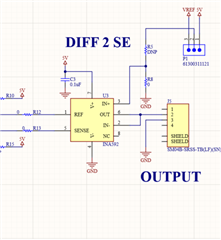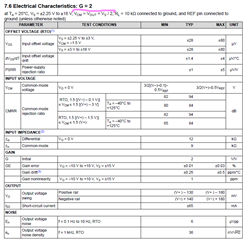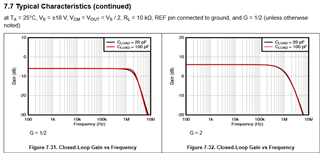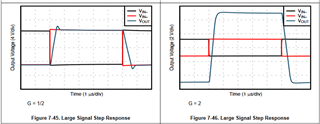Other Parts Discussed in Thread: INA597, STRIKE
Tool/software:
I'm trying to use this part in the G=2 mode, datasheet states this is possible. I have the -IN connected to OUT and the source negative input goes to SENSE, and the source positive input goes to REF and +IN goes to GND. Operating off +5V & GND. Only seeing 0V at OUT. The datasheet implies this mode is possible, but can it actually work this way? Am I missing something?







